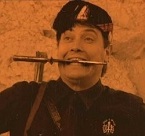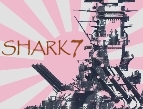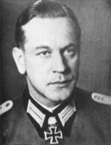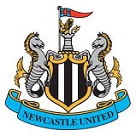kfsgo
Posts: 446
Joined: 9/16/2010
Status: offline

|
quote:
ORIGINAL: rader
My point is that although the damage can be seen as to be not too ahistorical, the circumstances that govern the prosecution of such bombing raids (low ops losses, ahistorically high pace of operations, not enough planes not finding the target, simple logistics, each bomb rolled individually and by very high exp pilot = always hit), mega-accurate 4E defensive fire, the fact that the game has no diminishing returns as cities take damage, etc., etc., most certainly are not historical. At this level of damage, Japan would be destroyed in a month (or two at most), unlike the ~year it took historically. Thus, a HR is necessary IMO to slow it down to a historically representative pace.
Ok; I'm sure you already know at least some of this, so I apologize if I come across the wrong way; still, anyone who cares enough to be here reading it will probably find it interesting.
This is an interesting interpretation of the way the strategic bomber offensive against Japan was conducted, in that it's "correct" in a broad sense ("it took a year") but not really in a detail sense.
Initial raids were launched from China - the Chengdu zone airfields - but these were limited by logistics rather than aircraft availability per se - the B-29s were actually "based" in India and had to fly in most of their own bombs, fuel etc. The number of raids was fairly limited for that reason, and most of them were launched against targets in China, not Japan (with Kyushu being about the range limit for a B-29 with a bombload); in game terms I think you'd be looking at about half a dozen raids of about 50 aircraft each in the period June-December 1944 launched against Japan, and even that could only be done by fitting the aircraft with extra fuel tanks and reducing the bombload. Where they did occur they were directed at point targets at high altitude - not particularly productive.
Raids from the Marianas didn't start from the initial capture of those islands (July-August 44); construction of airfields capable of handling B-29 took several months, the first B-29 didn't arrive on Saipan until October, with the first mission against Tokyo going off in the middle of November; these were also in the main daylight high-altitude missions against point targets, with again relatively limited results (though there were some successes - enough that the Japanese at this point began trying to disperse key production to underground sites etc). Aircraft numbers only really ramped up in early 1945. It is worth noting that one of the consequences of flying the aircraft at high altitude (25-30kft) was that, however poor the results may have been, interception was very difficult - the vast majority of losses had very little to do with the Japanese - which difficulty is not reflected in-game in the slightest as far as I'm aware.
It wasn't until March 1945 that significant low-level incendiary (and this is an important distinction - raids against point targets use explosives, which obviously do blow up stuff they hit but don't particularly cause 'ancilliary' damage the way incendiaries do) raids started, again "based" in the Marianas; by this time, however, aircraft are able to stage in through Iwo Jima, which means bombloads available are greater - flying direct from the Marianas, 5000lb per aircraft seems to have been a 'good' number.
So - while the heavy bomber offensive against Japan took more than a year, the great majority of the actual number of sorties and bombload delivered took place in the period from about March - actually mostly after that, since it took some time to work out what exactly was going right; and that's still flying the aircraft in a much more intensive manner than would be required from Hokkaido:
Saipan - Nagoya: 3000mi, ~10hrs+
Iwo Jima - Nagoya: 1500mi, ~5hrs+ (both pretty much entirely overwater, with all the tragic consequences that follow from that)
Sapporo - Nagoya: 1200mi, ~4hrs (~20% over friendly-controlled land, after which either overwater or over Japanese terr.)
The great restriction on the rate of operations seems to have been the time burden placed on the crews; there were issues with the provision of enough spare parts and incendiary munitions (which would likely be lesser given a shorter shipping route direct to Hokkaido), but it seems to have been considered inadvisable to fly crews (and there were never really enough crews) beyond around 60 hours per month; that was raised after March, but with trepidation. That gets you about two raids a week from the Marianas, given ~2 crews per aircraft, but from Hokkaido it will be a much lesser issue - insofar as the aircraft could be kept serviceable, they'd be flying.
So - really, in this situation, a raid every other day - and I personally find that's about what I get, given the very significant number of bombers that never reach the target even with 100% moonlight - is absolutely reasonable - you could almost certainly go quite a bit higher.
quote:
Additionally, the pattern of damage and losses in figthers make me think something is just not working right in the code, even if the intention of the developers was perfectly borne out.
While you're right in that 60+ is a large number, I can't personally replicate it at all - in experimenting with the Downfall scenario, with the latest patch, losses from around 80 bombers/night bombing Tokyo from Hokkaido against ~120 Japanese fighters per night seem to be around 5-15 aircraft per side, tops. Might there be some issues relating to the game having been progressively upgraded? I wouldn't have thought so, but your numbers are completely outside anything I can produce - so something seems likely to be different somewhere. I have no idea what, but...
quote:
Moreveover, and I think this is the most important point (at least at night) this appears to be a game-winning strategy without counter. I lost 68 fighters to 5 bombers, and the damage was severe. I can't see a single thing I could do (short of bombing the airfileds and flying into 3000+ CAP) to stop or even slightly mitigate this. Even if it was perfectly historical, it is just not good for the game IMO. I would rather play a balanced game that gives both sides options than one where once the allies get into range of Japan, the game is effectively over. Strategies that have no counter just aren't fun or balanced in a game setting.
What the Japanese seem to have done was...bomb the B-29 airfields at night. Not really a Thing after Iwo Jima, Okinawa etc but:
quote:
On 2 November, a week after the 73d Bombardment Wing's first practice mission against Truk, nine Japanese twin-engine planes swooped down for a low-level attack on Isley and Kobler fields. The intruders did little damage and three were destroyed. On the 7th there were two raids of five planes each and again the enemy lost three aircraft without doing much harm. There was then a lull until the B-29's turned against Honshu. Early in the morning of 27 November two twin-engine bombers came in low, caught the Superforts bombing up for the second Tokyo mission, and destroyed one, damaged eleven. At noon on the same day, while the 73d's formations were over Tokyo, ten to fifteen single-engine fighters slipped through the radar screen for a low-level sweep over Isley and Kobler in which they destroyed three B-29's and badly damaged two others.12 AAF fighters got four of the raiders; AA gunners shot down six others but also destroyed a P-47 under circumstances officially described as "inexcusable." Next night some six or eight enemy planes bombed from high altitude without inflicting much damage. On 7 December, in a combined high-low attack Japanese intruders destroyed three B-29's and damaged twenty-three. Using the same tactics, a force of about twenty-five planes staged a party Christmas night in which they destroyed one B-29, damaged three beyond repair, and inflicted minor damage on eleven.
This was the last large attack, though minor raids continued until 2 January, when the last Japanese bomb was dropped on Saipan, and enemy aircraft were sighted there as late as 2 February. In all, the Japanese had put more than eighty planes over Saipan and Tinian and had lost perhaps thirty-seven. This rate of loss spoke well of fighter and AA defense, and in normal operations would have been prohibitive to the enemy. But the intruders had destroyed 11 B-29's and had done major damage to 8 and minor damage to 35; trading fighters and medium bombers for B-29's in that ratio was not a bad exchange for the enemy, nor were his casualties appreciably higher than the toll of 45 dead and more than 200 wounded which he exacted.
People get very fixated on the "impossibility" of night attacks - and if you're trying to bomb half a dozen fighters on a dirt strip in the middle of a jungle, then yeah, there'll be problems with that. It's not impossible to do, though - just something you'd use fighters or light bombers for rather than the really big'uns.
I won't comment on the desire to have the game proceed in X or Y fashion as that's entirely up to you guys. There seems nothing particularly wrong with what's going on from a "historical" perspective, though. I always find the word a bit weaselly in the context of outcomes in wargames, to be honest - there are so many caveats attached to everything that was done that demanding exact adherence to anything is kinda strange.
|
 Printable Version
Printable Version














 But I don't think it leads to a fun game
But I don't think it leads to a fun game 







 New Messages
New Messages No New Messages
No New Messages Hot Topic w/ New Messages
Hot Topic w/ New Messages Hot Topic w/o New Messages
Hot Topic w/o New Messages Locked w/ New Messages
Locked w/ New Messages Locked w/o New Messages
Locked w/o New Messages Post New Thread
Post New Thread